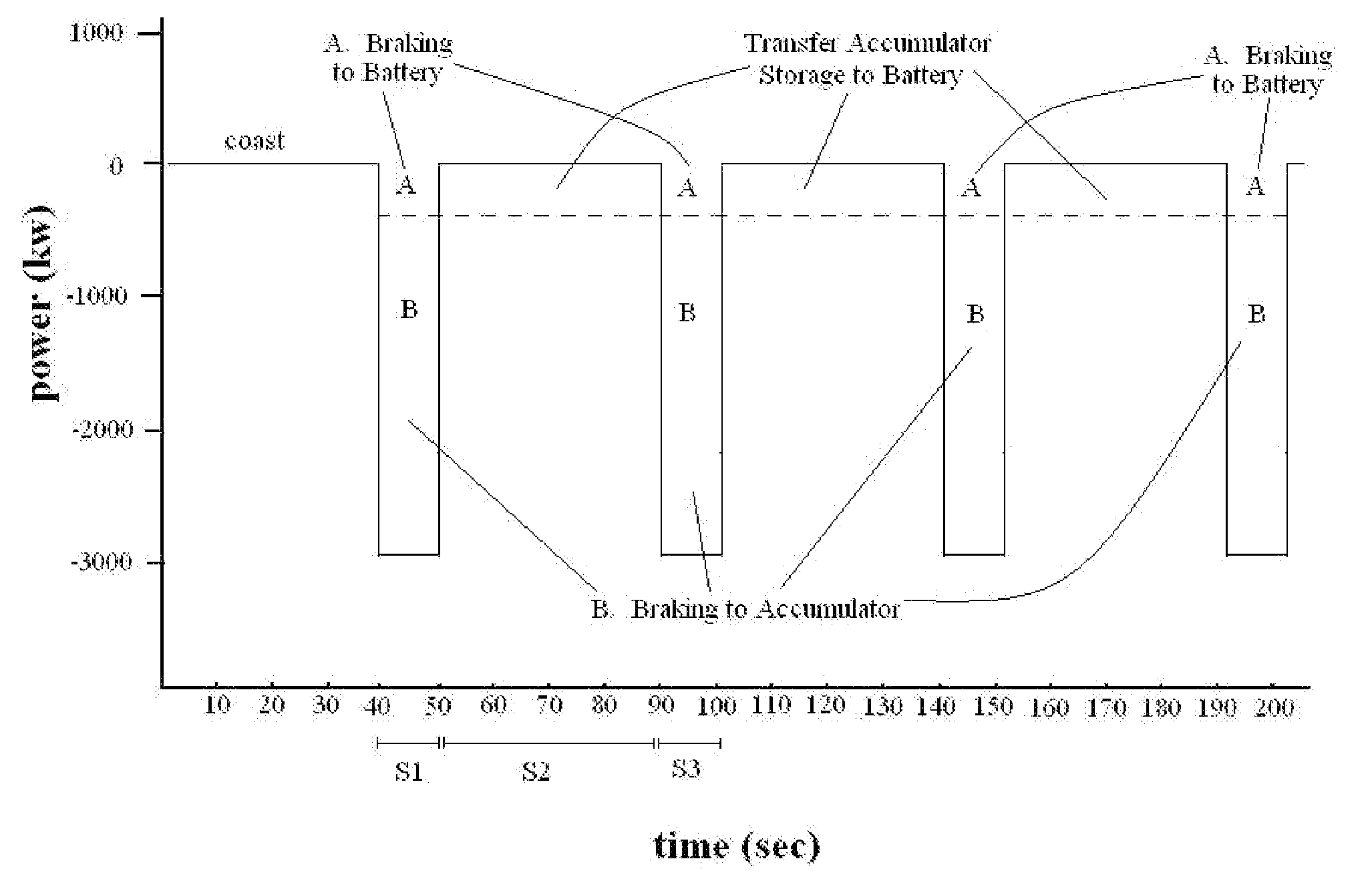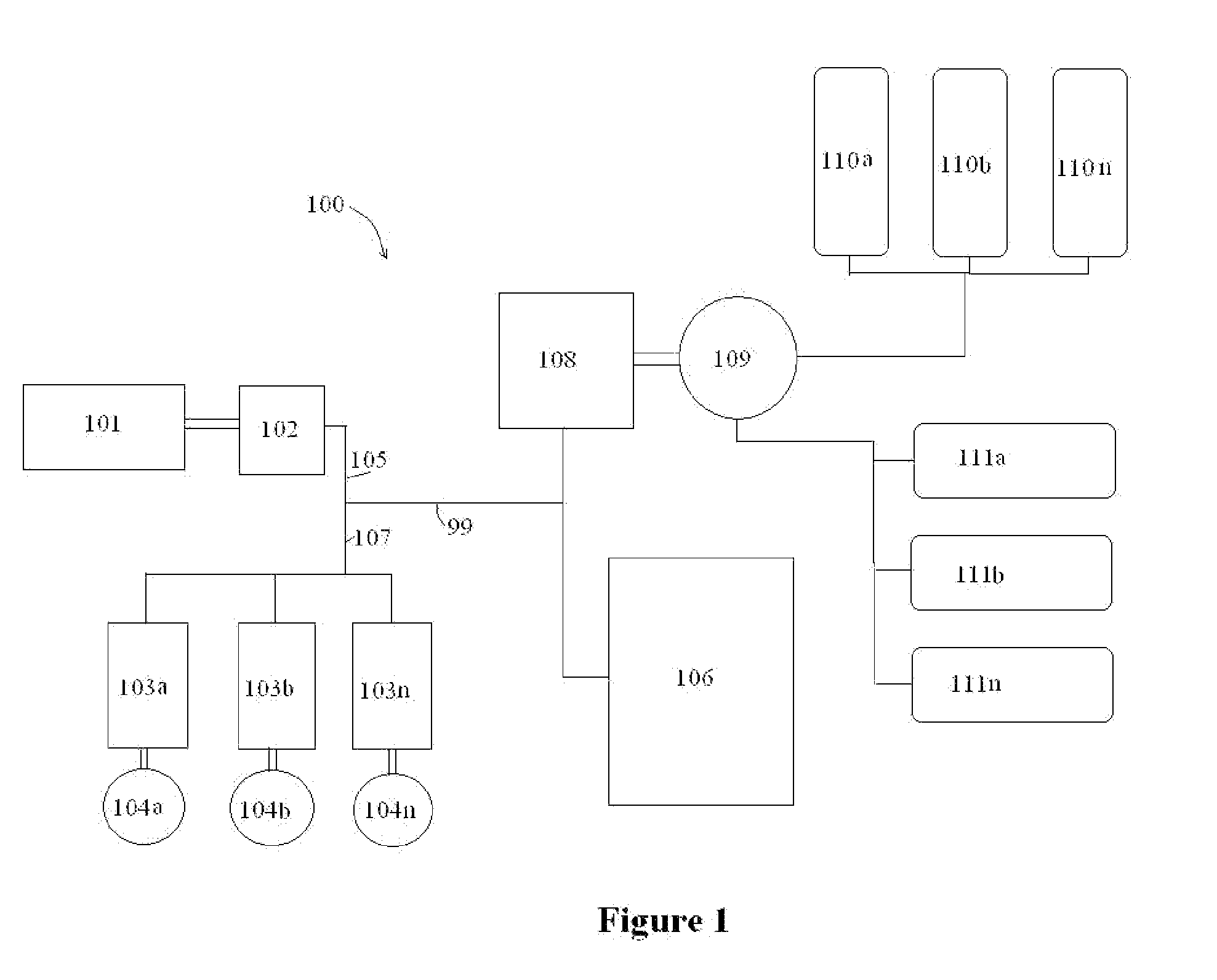Hybrid Locomotive Regenerative Energy Storage System and Method
a technology of regenerative energy storage and hybrid locomotives, applied in braking systems, railway stations, roads, etc., can solve the problems of increasing the cost and size of battery packs, and increasing the weight of vehicles. cost and energy saving
- Summary
- Abstract
- Description
- Claims
- Application Information
AI Technical Summary
Benefits of technology
Problems solved by technology
Method used
Image
Examples
Embodiment Construction
[0022]FIG. 1 is a schematic diagram of a powertrain of the present invention for use in conjunction with a diesel-electric locomotive. For simplicity sake in presenting each of the figures herein, common elements such as switches, inverters, and valves are not shown, but will be understood to exist as needed for the system to operate. These elements are well-known and easily incorporated by those with skill in the art(s).
[0023]Referring to FIG. 1, in diesel-electric locomotive 100, an internal combustion engine 101 drives a main electric / motor generator 102 to provide electric current through lines 105 and 107 to drive multiple electric motor / generators 103a, 103b . . . to 103n, as motors to drive wheels 104a, 104b . . . to 104n of the locomotive. Any actual number of motors and / or wheels may be used. Propulsion of the locomotive is performed as a known diesel-electric locomotive.
[0024]In dynamic braking, electrical power generated by the traction motors 103a-n is routed to another ...
PUM
 Login to View More
Login to View More Abstract
Description
Claims
Application Information
 Login to View More
Login to View More - R&D
- Intellectual Property
- Life Sciences
- Materials
- Tech Scout
- Unparalleled Data Quality
- Higher Quality Content
- 60% Fewer Hallucinations
Browse by: Latest US Patents, China's latest patents, Technical Efficacy Thesaurus, Application Domain, Technology Topic, Popular Technical Reports.
© 2025 PatSnap. All rights reserved.Legal|Privacy policy|Modern Slavery Act Transparency Statement|Sitemap|About US| Contact US: help@patsnap.com



